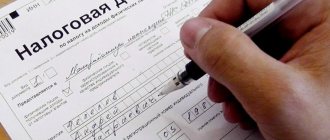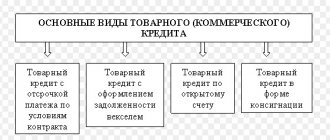The essence of the process of implementing online cash registers
From 07/01/2017, cash registers of a new type - online cash registers, characterized by:
- a higher degree of security for sales data generated on them;
- the ability to transmit this data in real time to the Federal Tax Service.
At the same time, a number of changes were introduced:
- to the list of persons obliged to use CCP;
- procedure for registering and using cash registers;
- register of mandatory details of documents generated by the cash desk.
To learn how the change in the list of persons required to use cash registers affected the stages of implementation of online devices, read the article “Who should switch to online cash registers from July 1, 2019?”
However, despite a fairly wide range of changes in working with cash register systems, the essence of these changes boils down to the fact that cash registers of a technically higher level began to be used for cash payments. And it was precisely this circumstance that caused most of the changes in the procedure for working with them. These changes did not affect the rules for accounting for revenue received through cash register systems, despite a number of innovations in the documentation of some cash transactions. Therefore, the question of how to keep records at online cash registers has only one answer: in the same order as before. There are no innovations in it.
Some businesses, usually online stores, prefer to use cloud services instead of cash registers. A cloud online cash register is a service through which an online store connects to a remote online machine located in the service’s data center. All information about calculations is carried out through this device, which is transmitted through the fiscal data operator to the tax office. And the cloud service ensures the connection of cash registers to the online store website, setting up online cash registers and uninterrupted access to them.
The cloud service allows you to rent several cash registers without a cash register and register them with the tax office.
Appendix 1C: Cash desk
1C: Cash register is an alternative to the accounting program 1C 8.3 Accounting in terms of maintaining inventory records and sales through cash register systems.
If you have simple merchandise accounting, and the cashier’s workplace is equipped separately from the accounting department and accounting program, and perhaps even involves mobile sales, then the 1C: Cashier may be what you need.
1C: Cash register is compatible with mobile and stationary cash registers:
- Shtrikh-Mpey-F - autonomous online cash register;
- Evotor - smart terminal;
- 1S-ATOL MK-11F - automation kits for mobile trading;
- 1S-ATOL MK-30F - set for stationary trade
- With other cash registers that have a 1C certificate: Compatible!
Changes in the processing of documents at the cash desk
A new approach to documents drawn up when using cash registers was outlined with the appearance of the updated text of Art. 1, paragraph 1 of which now states that when using cash register equipment one should be guided by:
- Law No. 54-FZ itself;
- regulations adopted in accordance with it.
That is, this automatically abolished the need to prepare previously considered mandatory documents, the unified forms of which were approved by Decree of the State Statistics Committee of December 25, 1998 No. 132:
- Acts:
- on transferring cash meter readings to zero (form KM-1);
- on taking meter readings when transferring the cash register for repairs (form KM-2);
- on the return of money to customers (form KM-3);
- on checking cash at the cash desk (form KM-9).
- Magazines:
- cashier-operator (form KM-4), letter of the Ministry of Finance of Russia dated June 16, 2017 No. 03-01-15/37692;
- registration of meter readings (form KM-5);
- recording calls from technical specialists (form KM-8).
- Reference reports:
- certificate-report of the cashier-operator (form KM-6);
- information on meter readings and revenue (form KM-7).
- shift opening report;
- correction cash receipt;
- report on closing the fiscal drive;
- operator confirmation.
- refund to the buyer;
- issuing funds to the client;
- receiving funds from the client.
At the same time, new documents that are related to cash payments made using online cash registers have been approved by Law No. 54-FZ (clause 4 of article 4.1):
Other documents have changed their form and requirements for details. With the use of the main cash document (check or BSO), it became possible not only to process receipts for purchases, but also such operations as (Clause 1, Article 4.7 of Law No. 54-FZ):
However, changes in documents drawn up using cash registers did not in any way affect the rules for maintaining documentation for the operating cash desk, approved by the Bank of Russia Directive No. 3210-U dated March 11, 2014. Therefore, it is still required to issue cash orders for receipts and expenses (clause 4.1) and maintain a cash book (clause 4.6). In relation to cash revenue, it will be mandatory to register it daily according to a receipt order, drawn up on the basis of a shift closing report generated on the online cash register, which is an analogue of the z-report created at the cash register with ECLZ.
You can find out more about the documents that are required to be completed using CCP in various situations in ConsultantPlus. Trial access to the legal system is free.
Let's look at how to organize cash accounting in the cash register.
Accounting for cash receipts
Revenue accepted into the online cash register is reflected in the taxpayer’s operating cash register. This procedure is recorded by postings:
- in retail trade that does not provide for customer analytics:
Dt 50 Kt 90.1;
- for cash payments with customers who are legal entities or individual entrepreneurs, in respect of which analytical accounting is important:
Dt 50 Kt 62 and Dt 62 Kt 90.1.
If payments are made using a plastic card, then account 57 is involved in the transactions:
Dt 57 Kt 90.1 or Dt 57 Kt 62.
Read more about using account 57 in the material “Posting debit 57 credit 57 (nuances)” .
Whether it is necessary to use cash register systems for non-cash payments, read in ConsultantPlus. Get trial access to the system and go to the Ready-made solution.
Purchase of a cash register and its recognition in accounting
When purchasing a cash register, the costs take into account the cost of the cash register itself, the fiscal drive, as well as the cost of delivery and setup services. Accounting for costs depends on what type of property the cash register belongs to. If the cash register has been used for more than a year, and its cost exceeds 40 thousand rubles, then the cash register must be classified as fixed assets in accounting. Further recognition of expenses for the purchase of cash registers will proceed in the usual manner through depreciation.
Assets with a value within the limit established in the accounting policy of the organization, but not more than 40 thousand rubles, in respect of which the recognition criteria established in paragraph 4 of FAS 6/01 are met, may be reflected in accounting and financial statements as part of inventories . After recognizing cash registers as inventories on account 10-9 “Inventory and household supplies”, it is assumed that expenses for their purchase will be recognized in accounting at the time of transfer to operation. In this case, entries will be made in the debit of the cost accounting accounts: 20 “Main production”, 26 “General business expenses”, 29 “Auxiliary production” (if sales take place in this division or sector), 44 “Sales expenses”.
Companies that use simplified accounting methods can only take into account the cash register price in the initial cost. Additional costs may not be included (clause 8.1 of PBU 6/01).
Accounting for refunds to the buyer for goods
Reflection in accounting for a refund for goods returned by the buyer depends on when this event occurred:
- in the same tax period with the sale (and it does not matter whether the day of sale coincides with the day of return) - in this case, reversing entries are used;
- different tax periods - here the return during the period of its implementation will have to be reflected through non-operating income and expenses.
Separately from the receipt of revenue, the return transaction will be shown even if the day of return coincides with the day of sale, since Law No. 54-FZ (clauses 1 and 4 of article 4.1, clause 3 of article 4.3, clause 1 of article 4.7) requires separate registration, storage and transfer to the Federal Tax Service of each document generated by the cash desk.
Accounting transactions using reversing entries will look like this:
- goods received from buyer:
Dt 41 Kt 76 (62);
- refund made:
Dt 76 (62) Kt 50 (51);
- adjusted revenue:
Dt 76 (62) Kt 90.1 reversal;
- Corrections have been made to write off the cost of goods sold:
Dt 90.2 Kt 76 (62) reversal.
If retail accounting is kept at sales prices, then upon return there will be an entry to restore the amount of the trade margin:
Dt 90.2 Kt 42.
If the tax periods of the sale and return do not coincide, then in the last 3 transactions, instead of subaccounts 90, account 91 with similar subaccount numbers will be used.
With regard to adjusting the amount of VAT on sales (if the seller works with this tax), it should be taken into account that here, in accordance with the requirements of the Tax Code of the Russian Federation (clause 5 of Article 171), it will be necessary to make a deduction for the amount of tax corresponding to the amount of the refund. In this case, the purchase book must contain the details of either an adjustment invoice or an expense cash order that formalized the issuance of money to the buyer (letter of the Ministry of Finance of Russia dated March 19, 2013 No. 03-07-15/8473).
Since for the correct implementation of the deduction (indicating the details of the document giving the right to it), the VAT amount must be reflected on account 19, the logical entry for reflecting the amount intended for deduction would be:
Dt 90.3 Kt 19 reversal.
It will essentially replace 2 entries: for adjusting VAT on revenue (Dt 90.3 Kt 68 reversal) and for calculating the same amount of tax for deduction (Dt 19 Kt 68 or Dt 68 Kt 19 reversal).
The deduction for the amount reflected in account 19 on the date of its accrual will be made by the usual posting for it:
Dt 68 Kt 19.
Read more about creating a purchase book in the article “What are the basic rules for filling out and maintaining a purchase book?” .
Payment card transactions
Reception and return of funds through electronic means of payment - payment cards, electronic money (Yandex, Kiwi, etc.) - are not related to the receipt and payment of cash, but relate to actions at the cash desk, as they require the use of cash register equipment ( KKT). Therefore, in 1C, documents on such transactions are available from the section Bank and cash desk – Cash desk – Transactions on payment cards.
See also Transactions on payment cards and bank loans in 1C 8.3
With payment cards the following transactions are possible:
- Retail revenue - used for retail sales through a manual point of sale (NTP), i.e. when it is impossible to account for goods sold at retail on a daily basis;
- Payment from the buyer - used: for retail sales through an automated point of sale (ATP), i.e. when records of goods sold at retail are kept daily;
- in distance sales with payment via the Internet;
- for wholesale sales, when payment is made by corporate payment card;
Document Payment card transaction transaction type Payment from the buyer is used for ATT, when payment and shipment of goods are separated in time (for example, prepayment via the Internet). If the goods are paid for at the point of purchase, payment by payment card will be reflected in the Retail Sales Report document.
To use payment card transactions, you must:
- set up a warehouse of a retail outlet in 1C (Directories - Goods and Services - Warehouses): ATT - with the warehouse type Retail store ;
- NTT - with warehouse type Manual point of sale;
- ATT - at sales prices;
Read more How to make acquiring payments in 1C so that income from retail outlets under UTII does not appear in the Book of Income and Expenses under the simplified tax system
Accounting for other settlements with the client
Other cash payments with the client at the cash desk may include:
- payments for goods accepted for commission;
- payment for recyclable materials purchased from the population;
- issuance of winnings;
- settlements under an agency agreement.
These are expense transactions documented by posting:
Dt 76 (60) Kt 50 (51).
The account number options on the debit portion of this entry will depend on what is written in the accounting policies regarding the accounting for a particular payment. And in the credit part for the situation of transferring money to a plastic card, an account of 51 will appear.
Accordingly, when returning funds issued to the client, a reverse posting will occur, in which account 57 will participate when making payments through a plastic card:
Dt 50 (57) Kt 76 (60).
Read about the nuances of recording transactions under an agency agreement in the material “Features of an agency agreement in accounting .
Results
The transition to the use of online cash registers essentially represents the replacement of previously used cash register systems with higher-level technology, which makes it possible to better protect cash register data from changes and increase the degree of control of the tax authorities over them. It is with this kind of changes that the main aspects of updating the procedure for using CCP are associated. Despite the fact that their consequence was the abolition of the obligation to use some documents previously drawn up when using cash registers, these changes did not affect the procedure for reflecting in accounting transactions related to the acceptance and issuance of cash through cash registers. Therefore, accounting for the movement of funds passing through the cash register is carried out in the same manner.
You can find more complete information on the topic in ConsultantPlus. Free trial access to the system for 2 days.
Working with cash documents
Managing the organization's cash desk involves conducting operations for receiving and issuing funds with daily summing up.
In 1C, such operations are carried out from the section Bank and cash desk – Cash desk – Cash documents.
Coming
The receipt of funds is carried out by the Cash Receipt , which can be created from the Cash Documents using the Receipt .
Cash receipts have several types of transactions, by choosing which, depending on the transaction being carried out, you can quickly fill out a document and correctly reflect the transaction in accounting.
For most types of operations, the following are automatically installed:
- Settlement account;
- Income item.
Transaction type Other income is used for non-standard transactions with any settlement account and type of income (type of cash flow).
More details, generation of the Cash Receipt when:
- sale to the buyer;
- return of unused accountable amounts;
- payment of the management share in cash.
Consumption
Cash expenses are documented in the Cash Issue from the Cash Documents using the Issue .
Cash Withdrawal document also has several types of transactions with predefined settlement accounts and expense types.
Other expenses - for facts of economic life that are not provided for by other types of transactions in the Cash Issue .
More information about the formation of the Cash Withdrawal for:
- issuance of accountable amounts.









